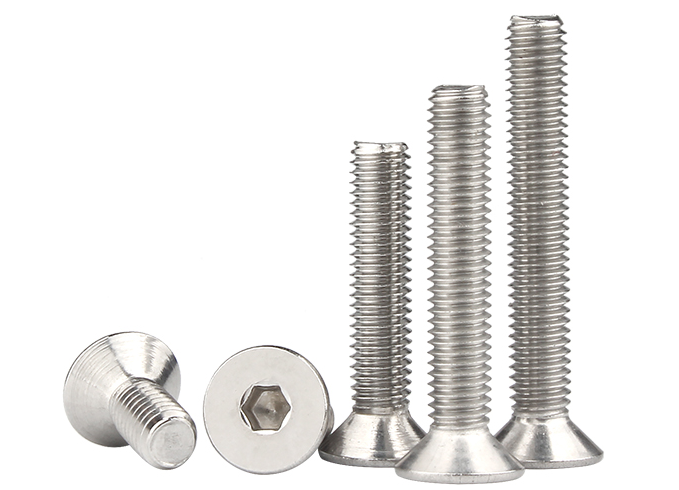

din 125a
Sep . 25, 2024 02:47 Back to list
din 125a
Understanding DIN 125A An Essential Standard for Washers
DIN 125A is a critical standard within the field of mechanical engineering and manufacturing, specifically concerning flat washers. This standard, established by the Deutsches Institut für Normung (DIN), serves to ensure consistency, quality, and safety in the use of washers across various applications. Flat washers are often utilized in conjunction with screws, bolts, and nuts to distribute loads and reduce the risk of damage to the materials they are affixed to.
The Importance of Washers
Washers play a pivotal role in fastening systems by providing a stable surface for nuts and bolts. They help to prevent the loosening of fasteners caused by vibration or thermal expansion, thereby maintaining the integrity of the connections. By redistributing pressure from the fastener head or nut, washers also protect surfaces from damage and can accommodate minor surface irregularities.
There are several types of washers, but flat washers are the most commonly used. The DIN 125A standard specifies the dimensions, material specifications, and tolerances for these essential components, ensuring they meet the requirements necessary for reliable performance in various applications.
Key Specifications of DIN 125A
The DIN 125A standard outlines the dimensions of flat washers based on their inner and outer diameters as well as thickness. These specifications are critical as they dictate how washers fit onto bolts and other fasteners. A typical flat washer outlined in this standard has an inner diameter that matches the bolt or screw diameter, ensuring a snug fit, while the outer diameter provides sufficient surface area to adequately distribute the load being applied.
Moreover, the standard provides guidelines for manufacturing tolerances, ensuring that the washers produced can reliably fit their intended applications without excessive wear or failure. By adhering to DIN 125A, manufacturers ensure that their products align with industry standards, promoting safety and performance.
din 125a

Material Considerations
In addition to dimensions, DIN 125A also addresses the materials used to manufacture flat washers. Common materials include various grades of steel, stainless steel, and sometimes non-metallic options, depending on the application's requirements. For instance, while carbon steel washers are cost-effective and provide decent strength, stainless steel washers offer enhanced corrosion resistance, making them ideal for environments exposed to moisture or chemicals.
Choosing the right material in accordance with DIN 125A can impact not only the durability of the washers but also the overall lifespan of assemblies in which they are used. This consideration is particularly important in industries such as construction, automotive, and aerospace, where the integrity of fastening systems is critical.
Applications of DIN 125A Washers
The versatility of DIN 125A washers makes them a staple in a wide range of industries. Whether in automotive manufacturing, structural applications, or consumer product assembly, these washers are integral to ensuring stability and safety. In automotive applications, for example, they are used in securing components throughout the vehicle, ensuring that parts remain firmly in place despite operational vibrations and thermal changes.
Additionally, DIN 125A washers are employed in electronic equipment where compact designs and reliability are key. In these cases, a correctly sized flat washer can prevent damage to circuit boards or sensitive components by distributing loads away from high-stress points.
Conclusion
In summary, DIN 125A is an essential standard that governs the design and manufacturing of flat washers. By providing clear guidelines regarding dimensions, tolerances, and materials, this standard promotes uniformity, safety, and reliability in fastening systems across various applications. Whether in construction, automotive, or electronics, adhering to DIN 125A ensures that washers perform their critical role effectively, thereby safeguarding the integrity and longevity of the products they are designed to support. As industries continue to evolve, the role of standards like DIN 125A will remain crucial in fostering innovation while maintaining safety and performance in engineering practices.
Latest news
-
Hot Dip Galvanized Bolts-About LongZe|High Strength, Corrosion Resistance
NewsJul.30,2025
-
High-Strength Hot Dip Galvanized Bolts - Hebei Longze | Corrosion Resistance, Customization
NewsJul.30,2025
-
Hot Dip Galvanized Bolts-Hebei Longze|Corrosion Resistance&High Strength
NewsJul.30,2025
-
High-Strength Hot-Dip Galvanized Bolts-Hebei Longze|Corrosion Resistance&High Strength
NewsJul.30,2025
-
Hot Dip Galvanized Bolts-Hebei Longze|Corrosion Resistance&High Strength
NewsJul.30,2025
-
Hot Dip Galvanized Bolts - Hebei Longze | Corrosion Resistance, High Strength
NewsJul.30,2025

